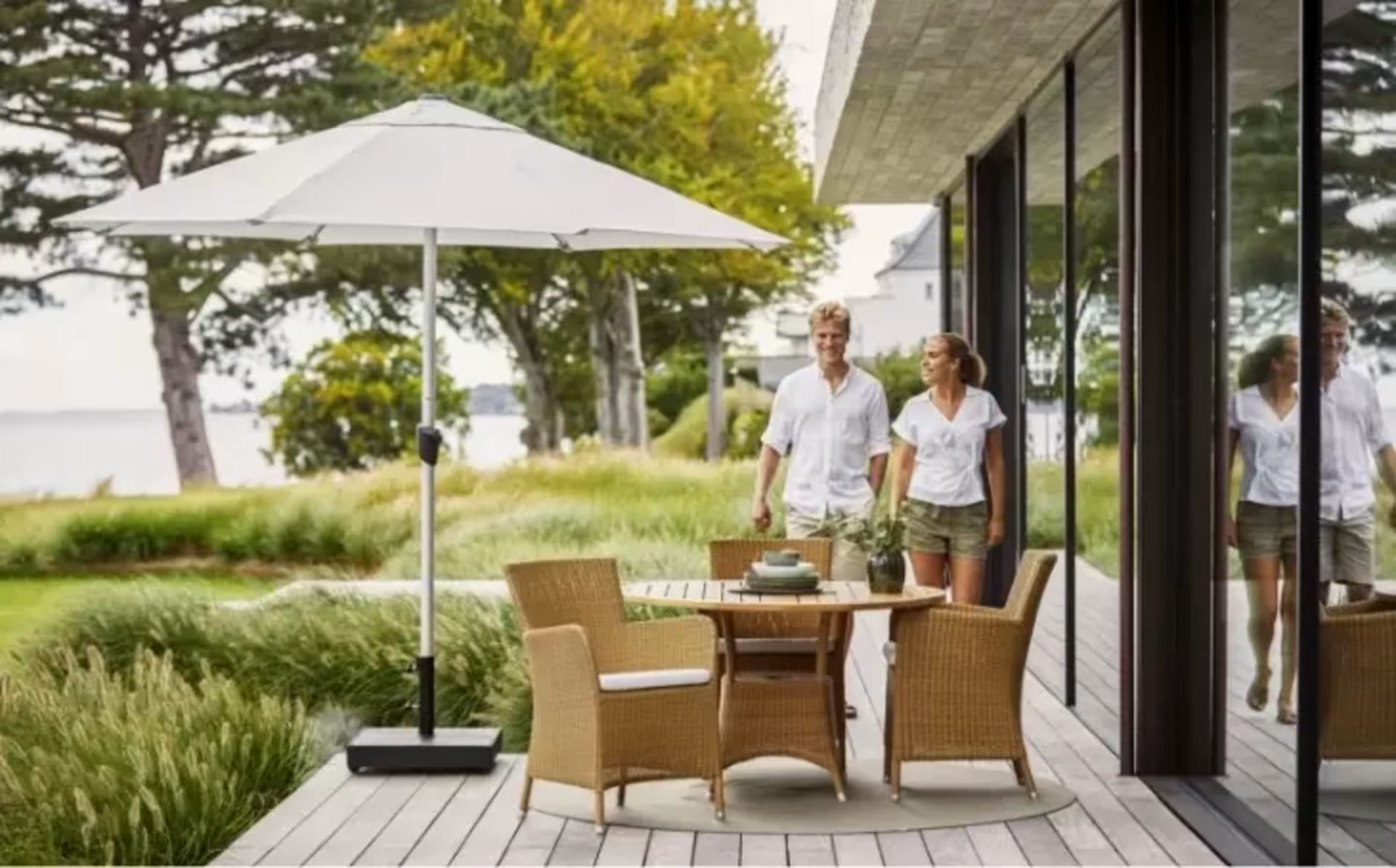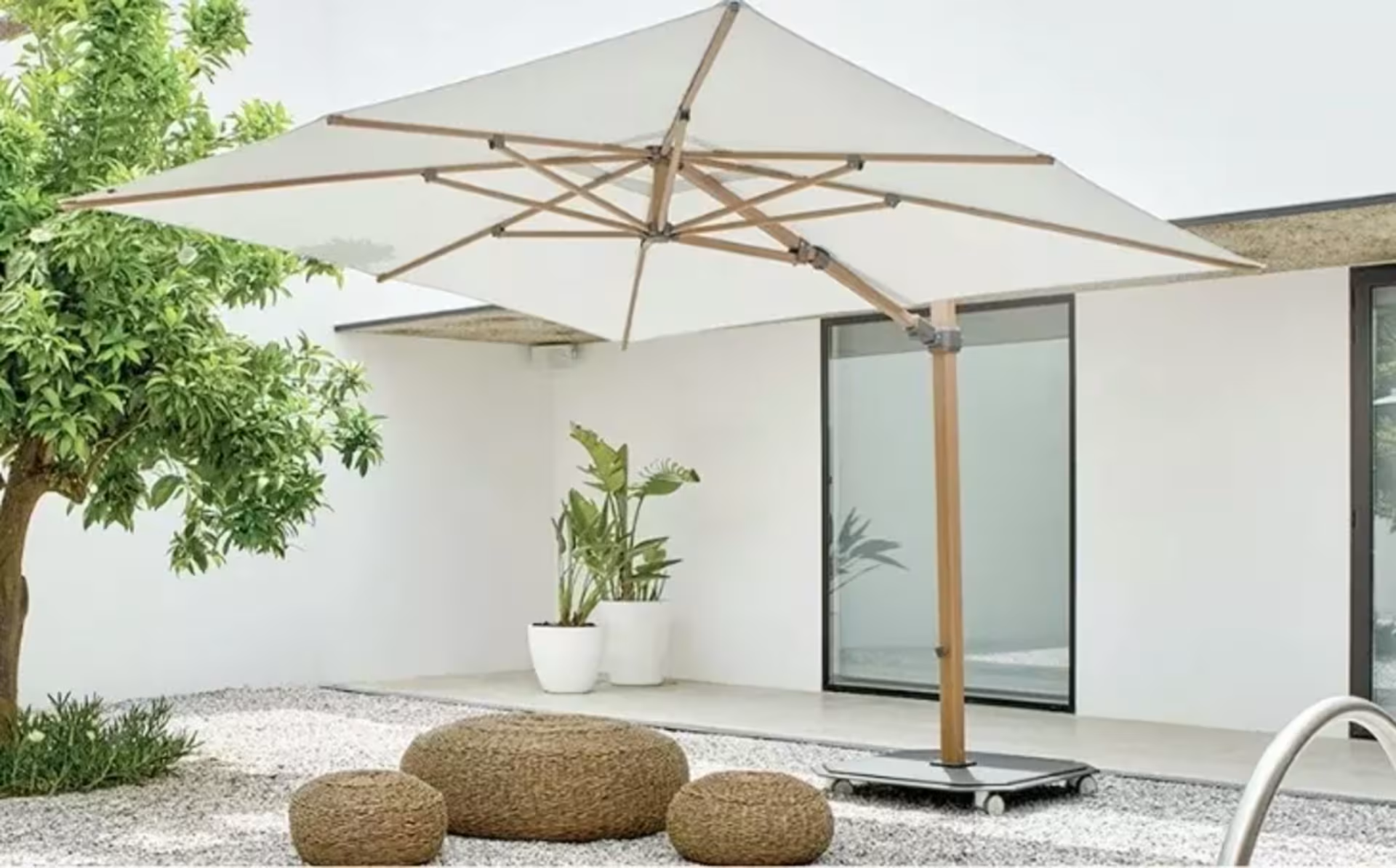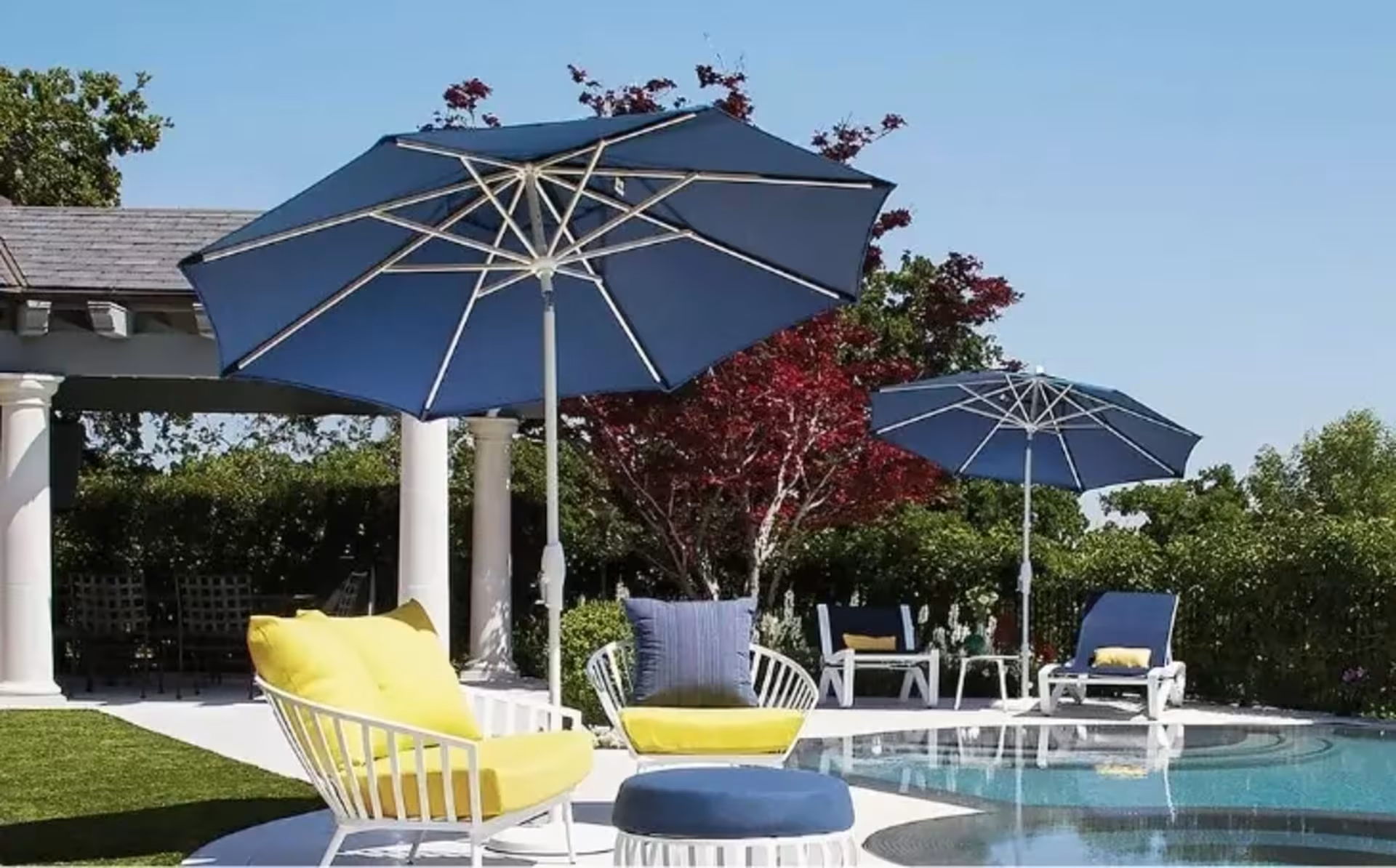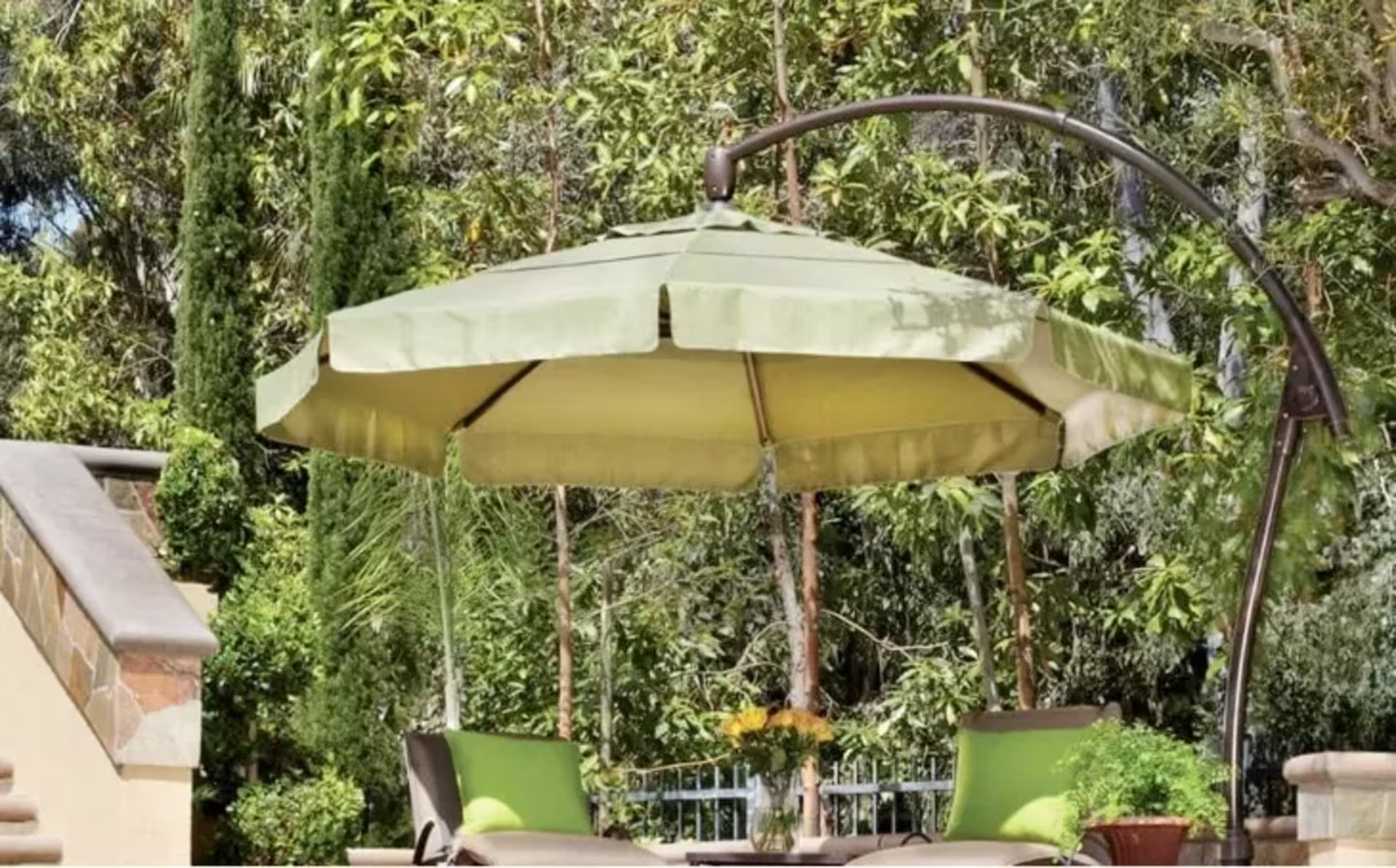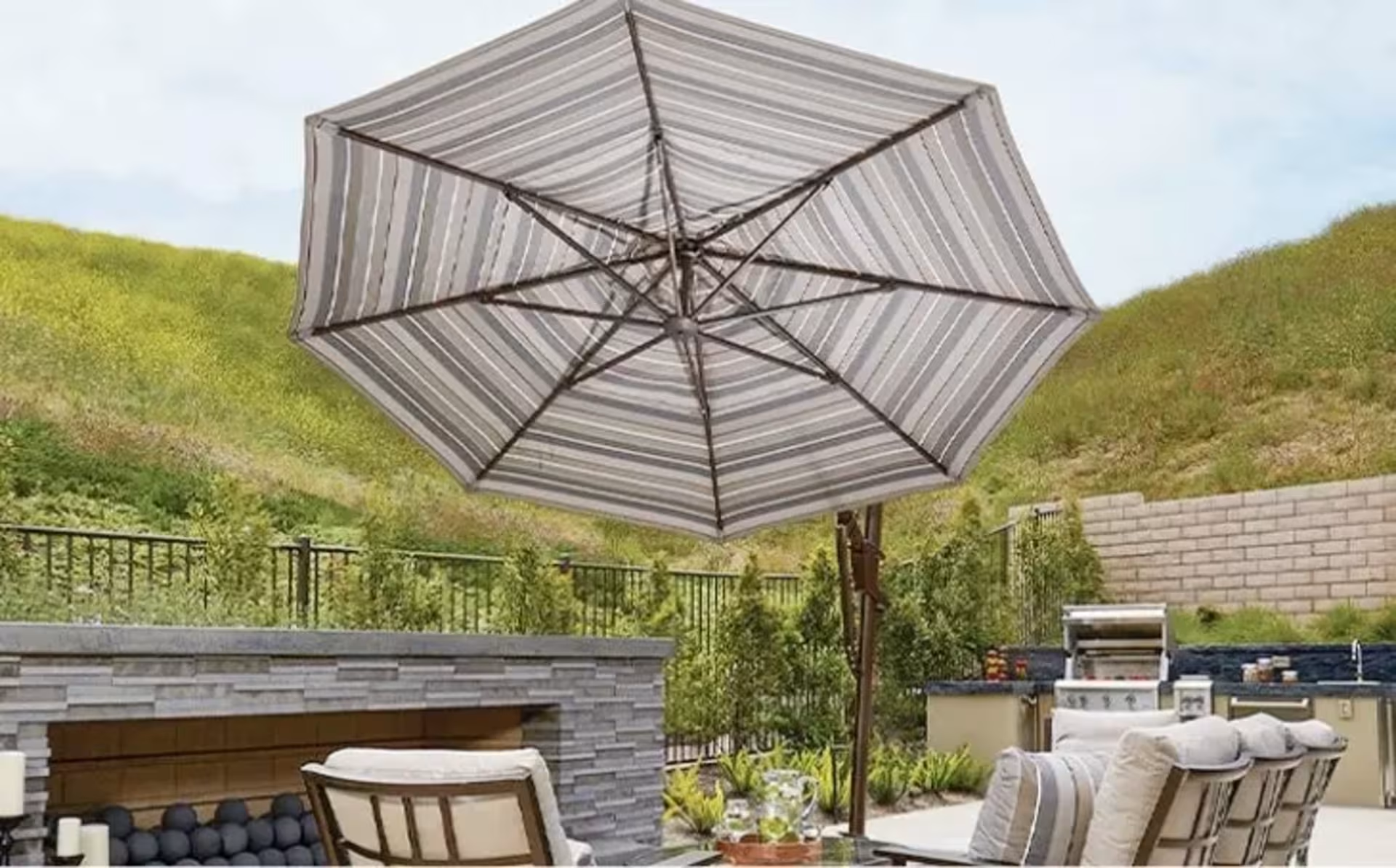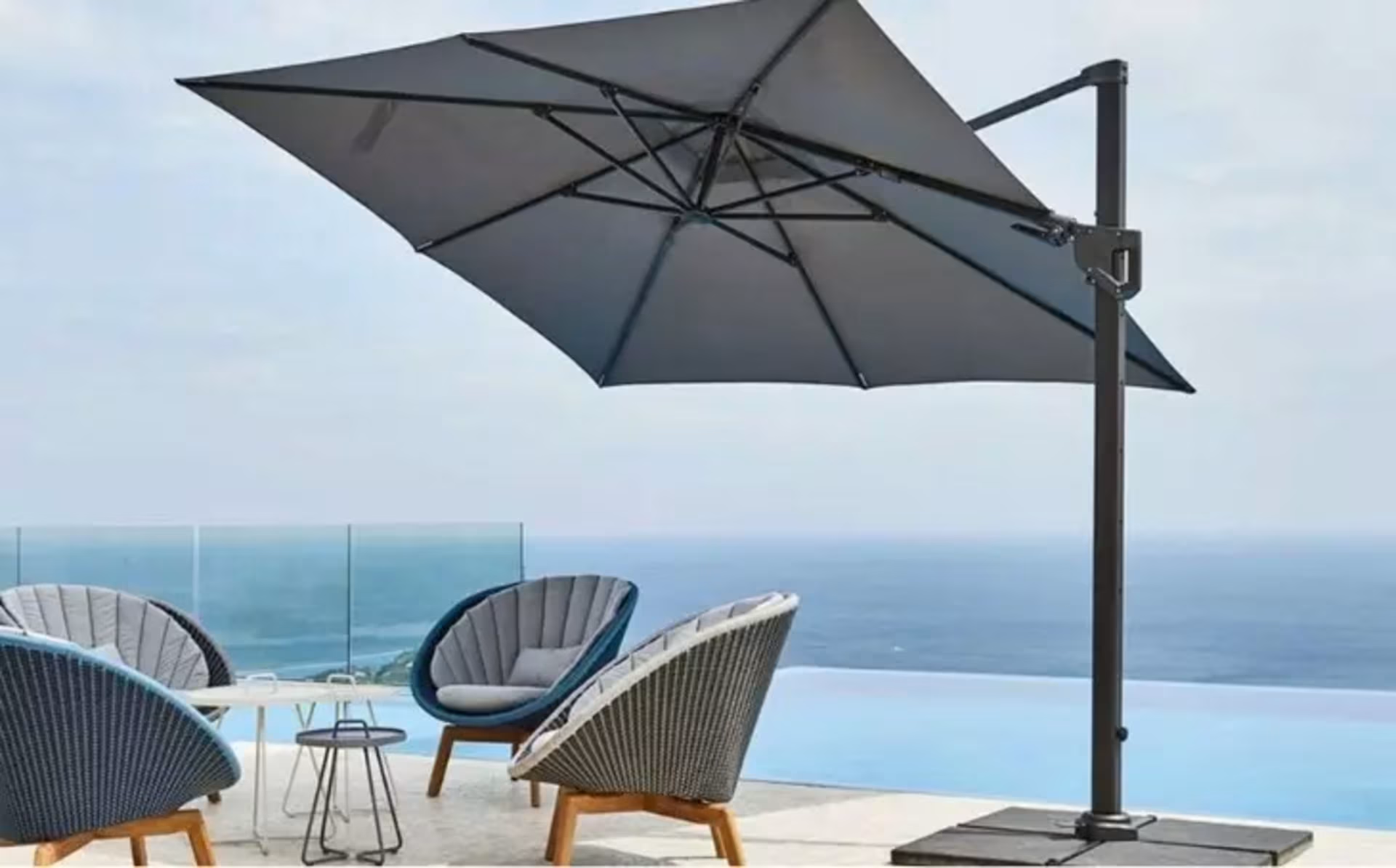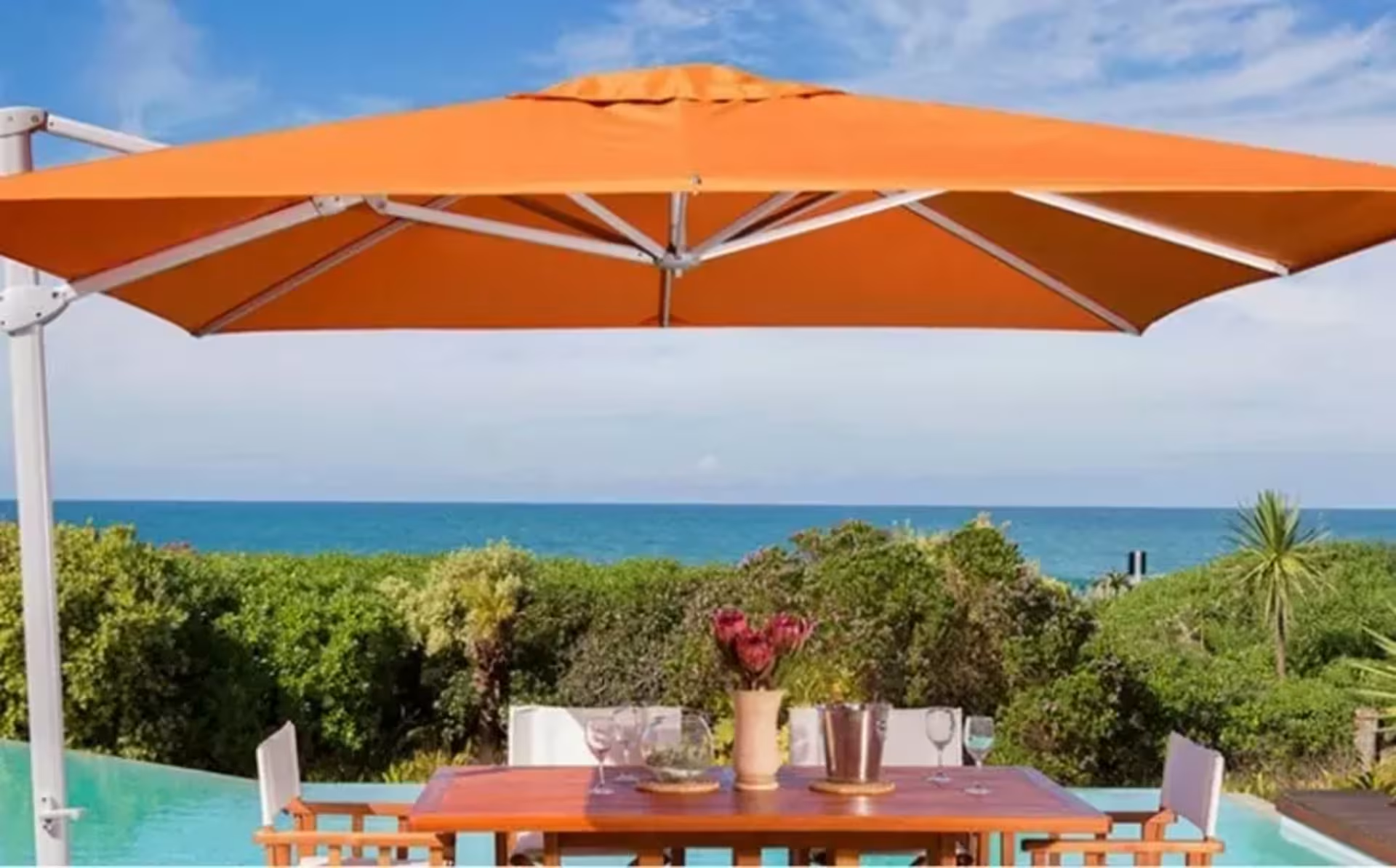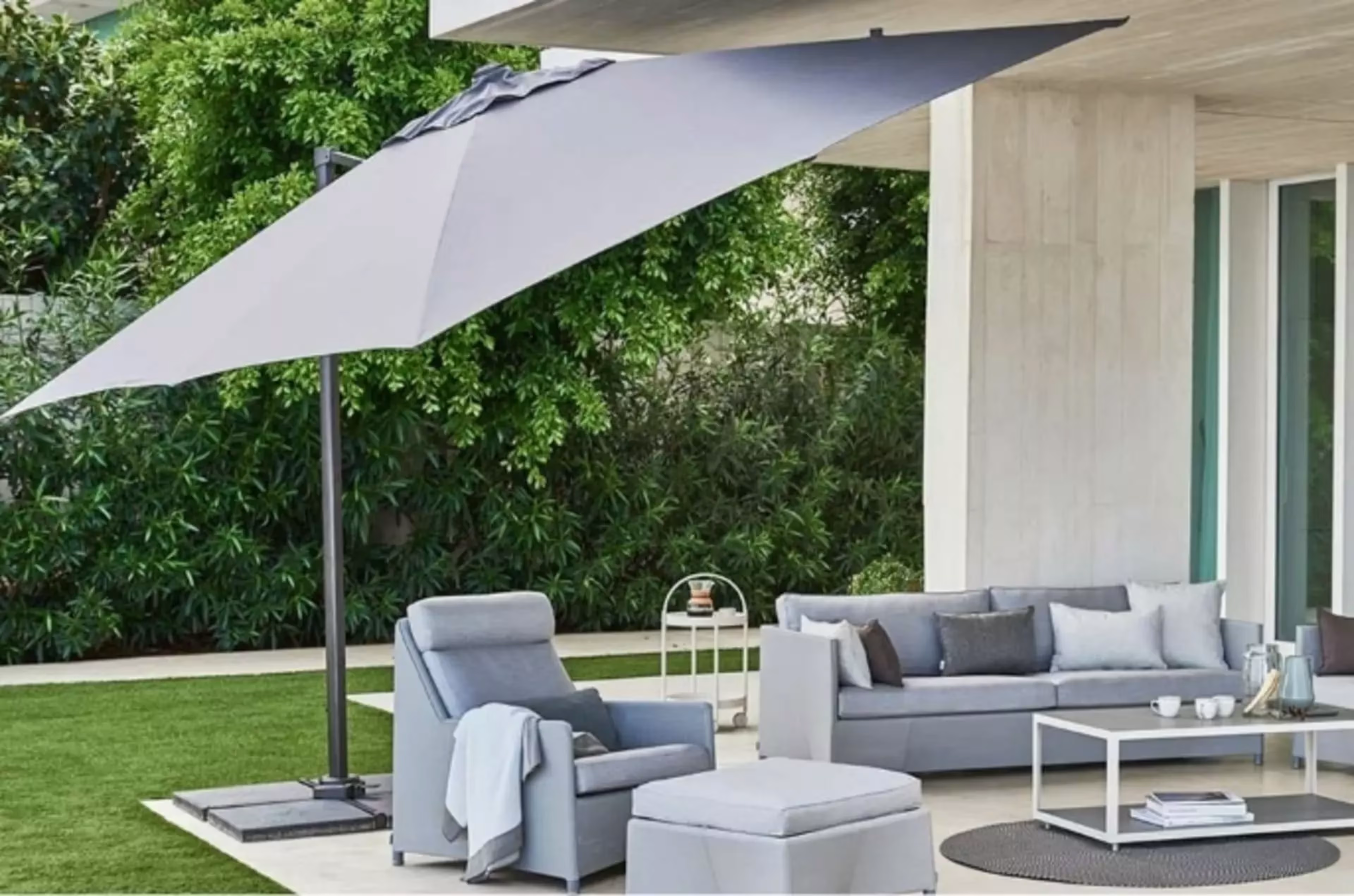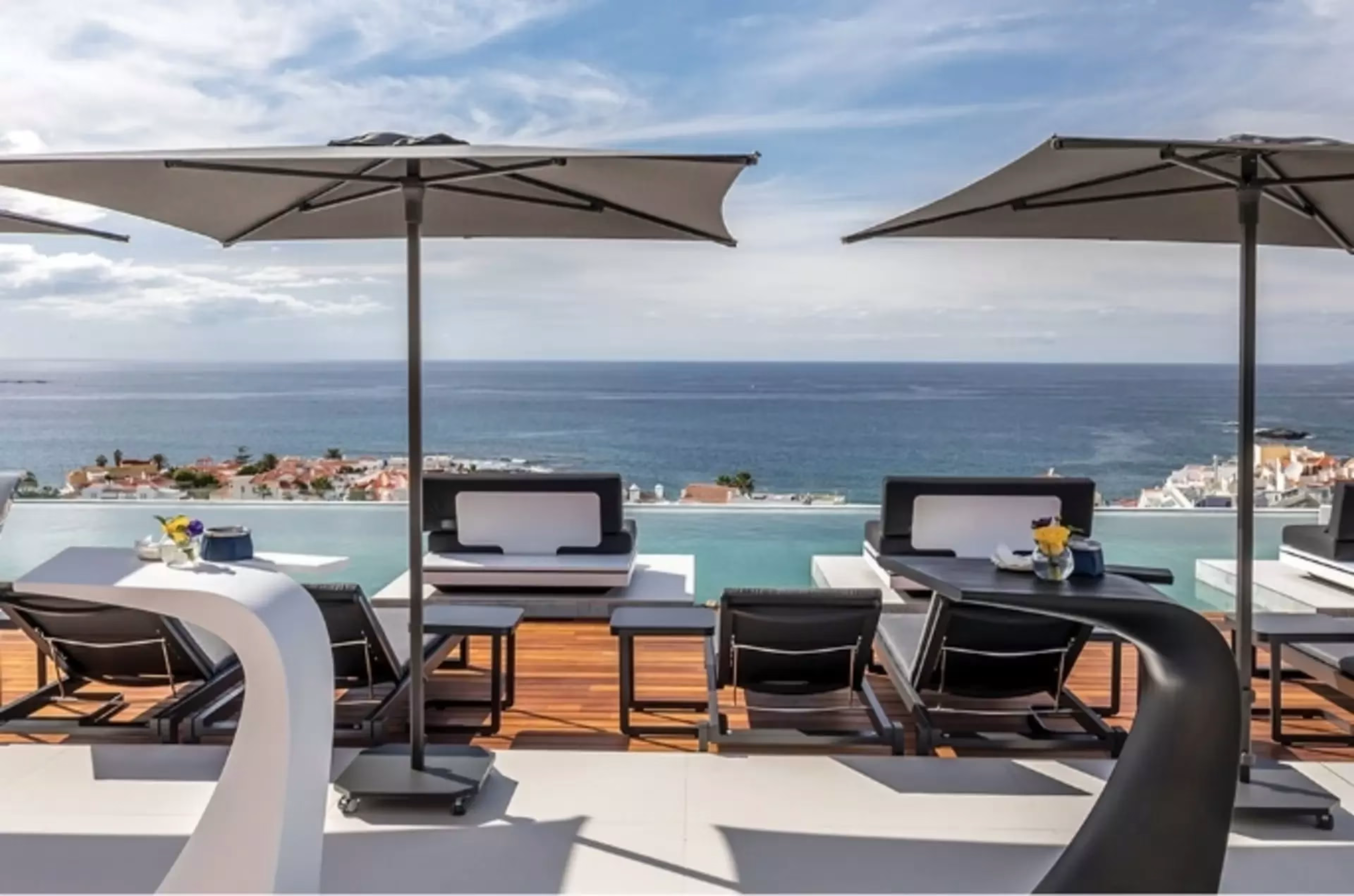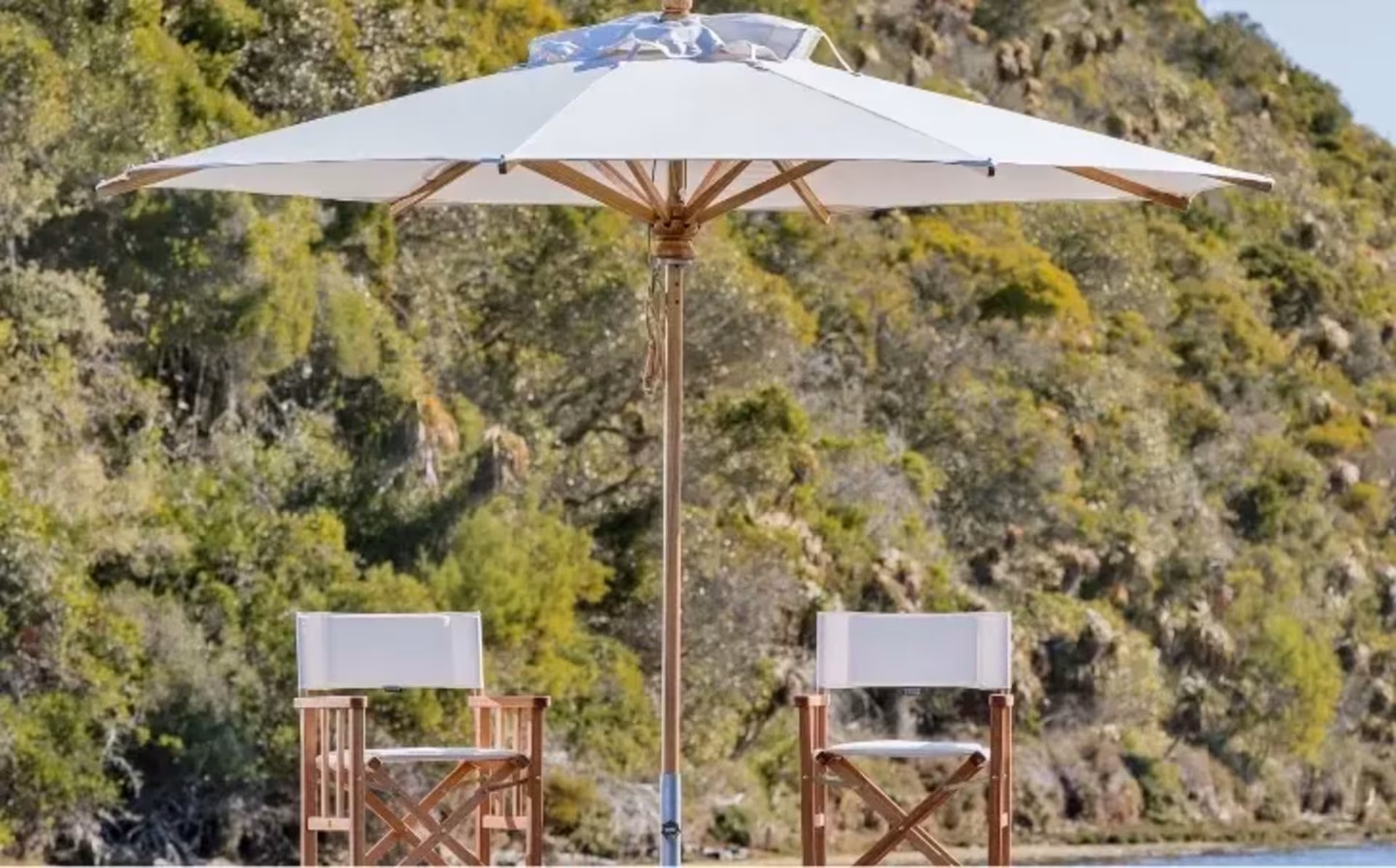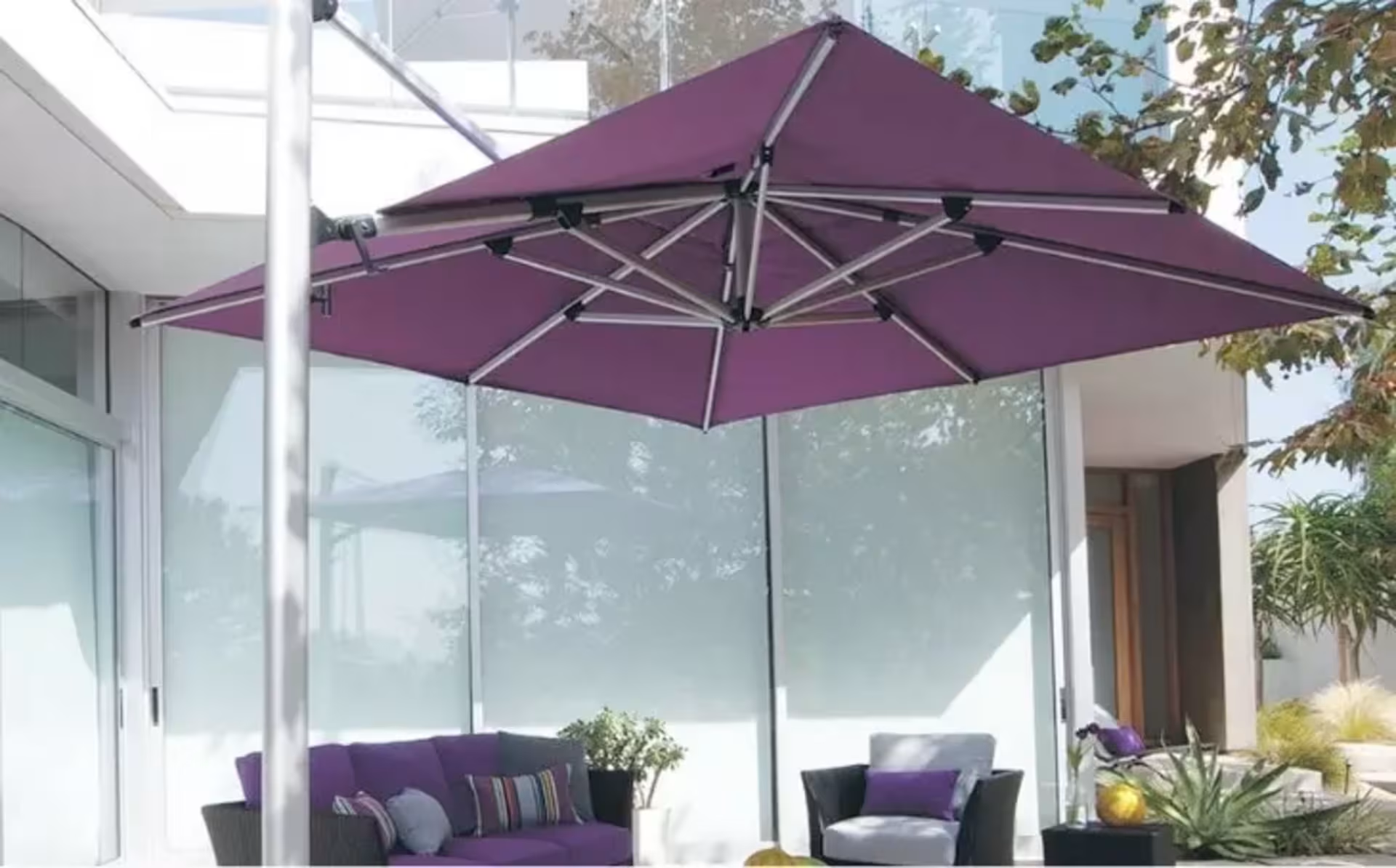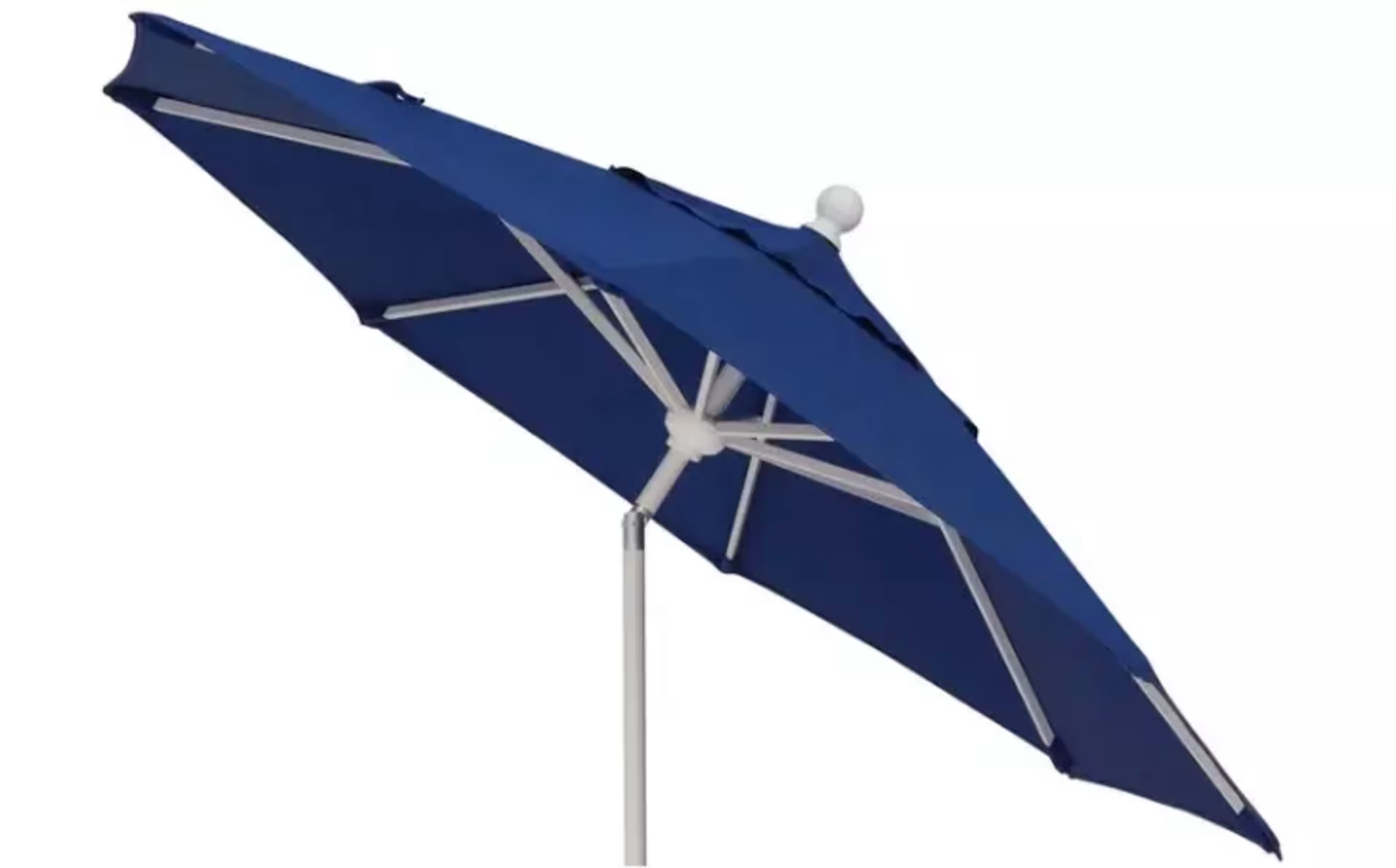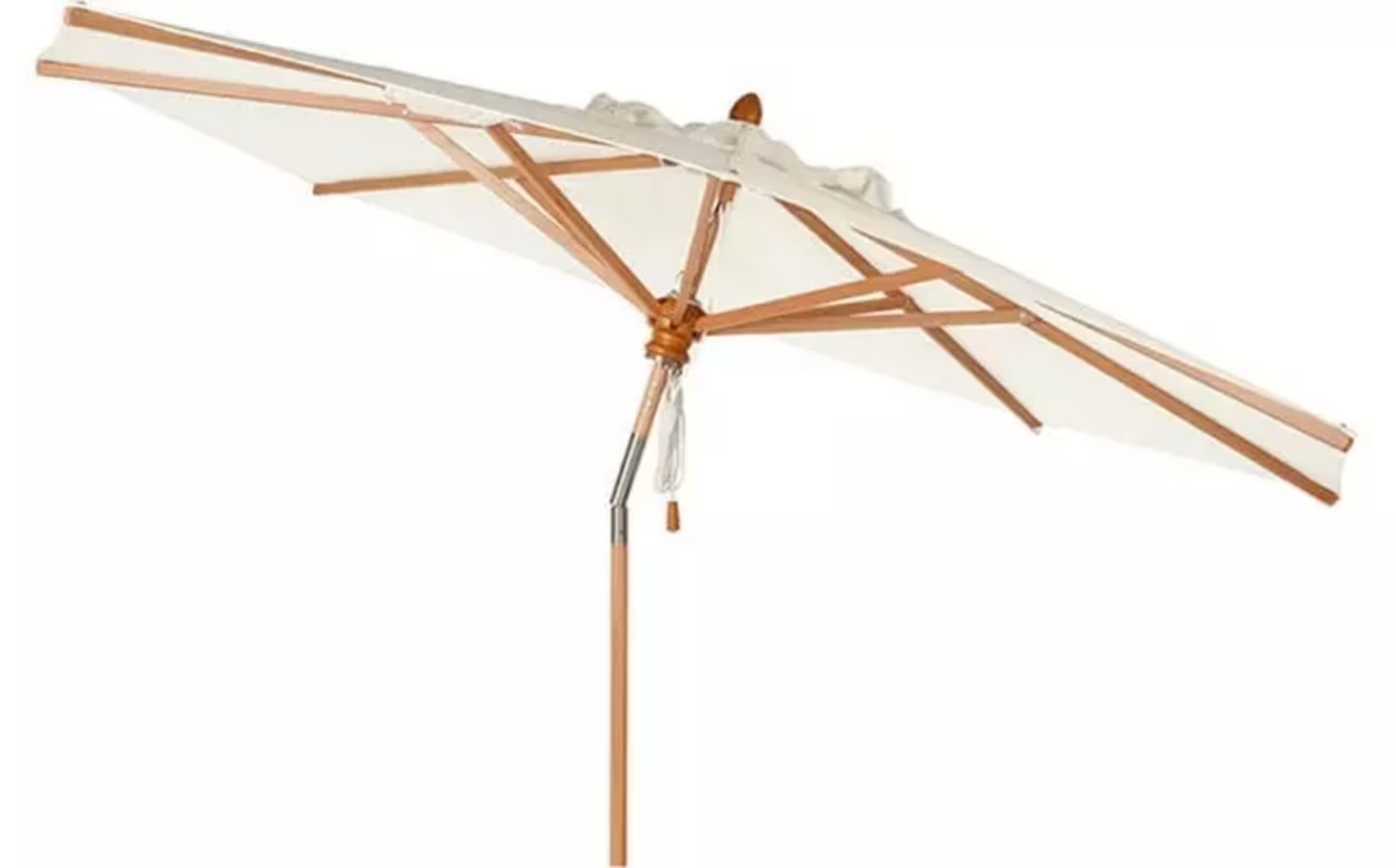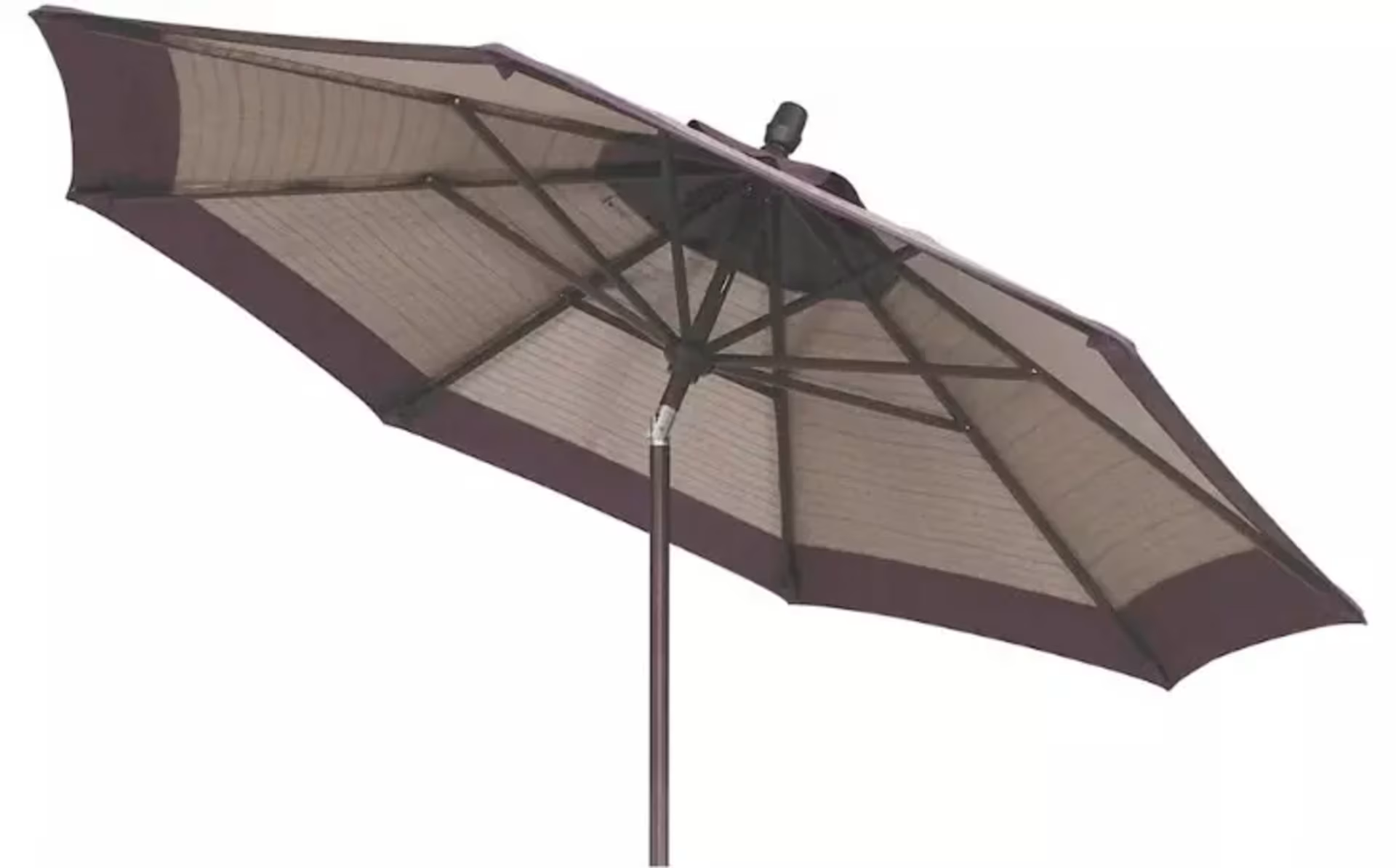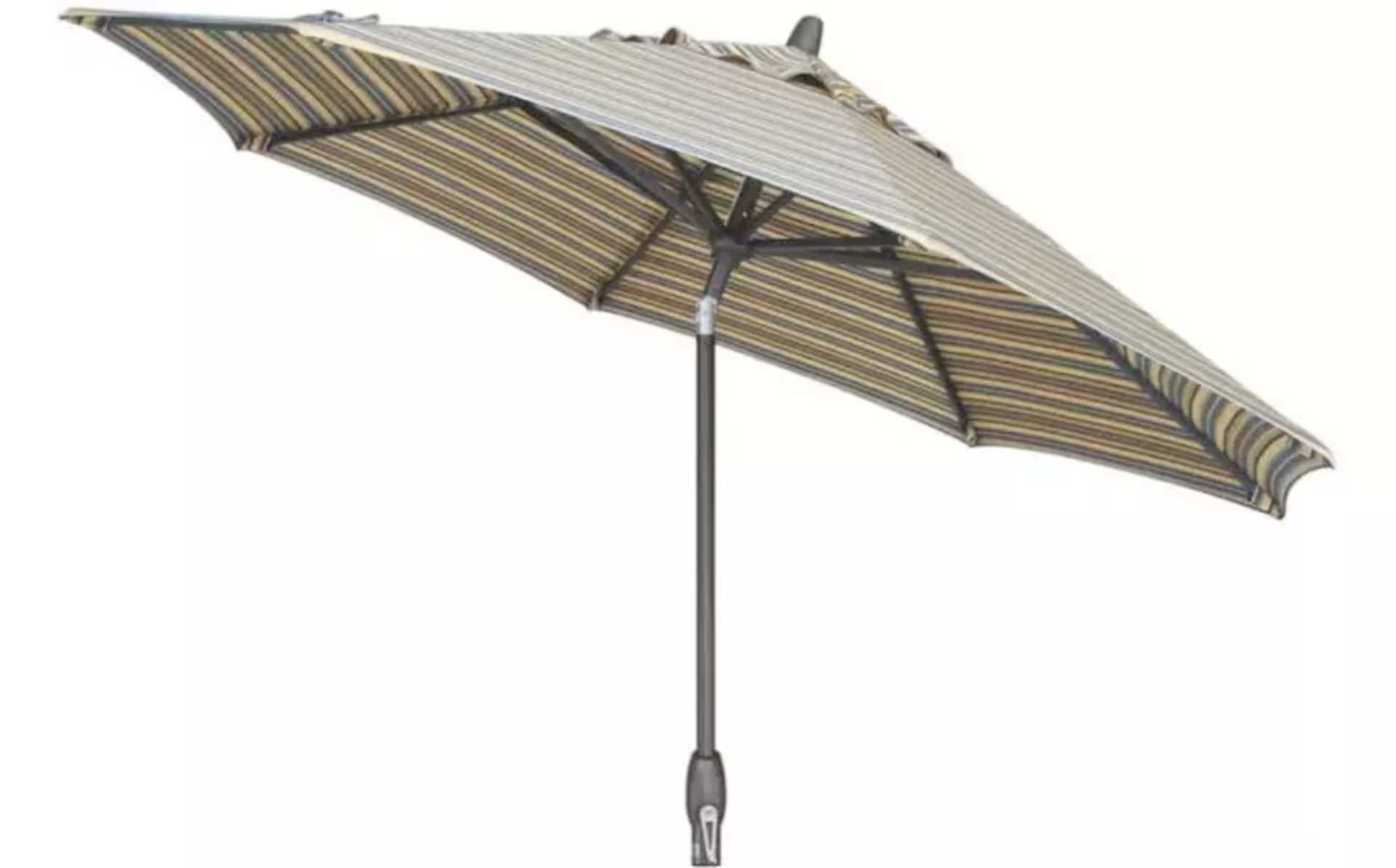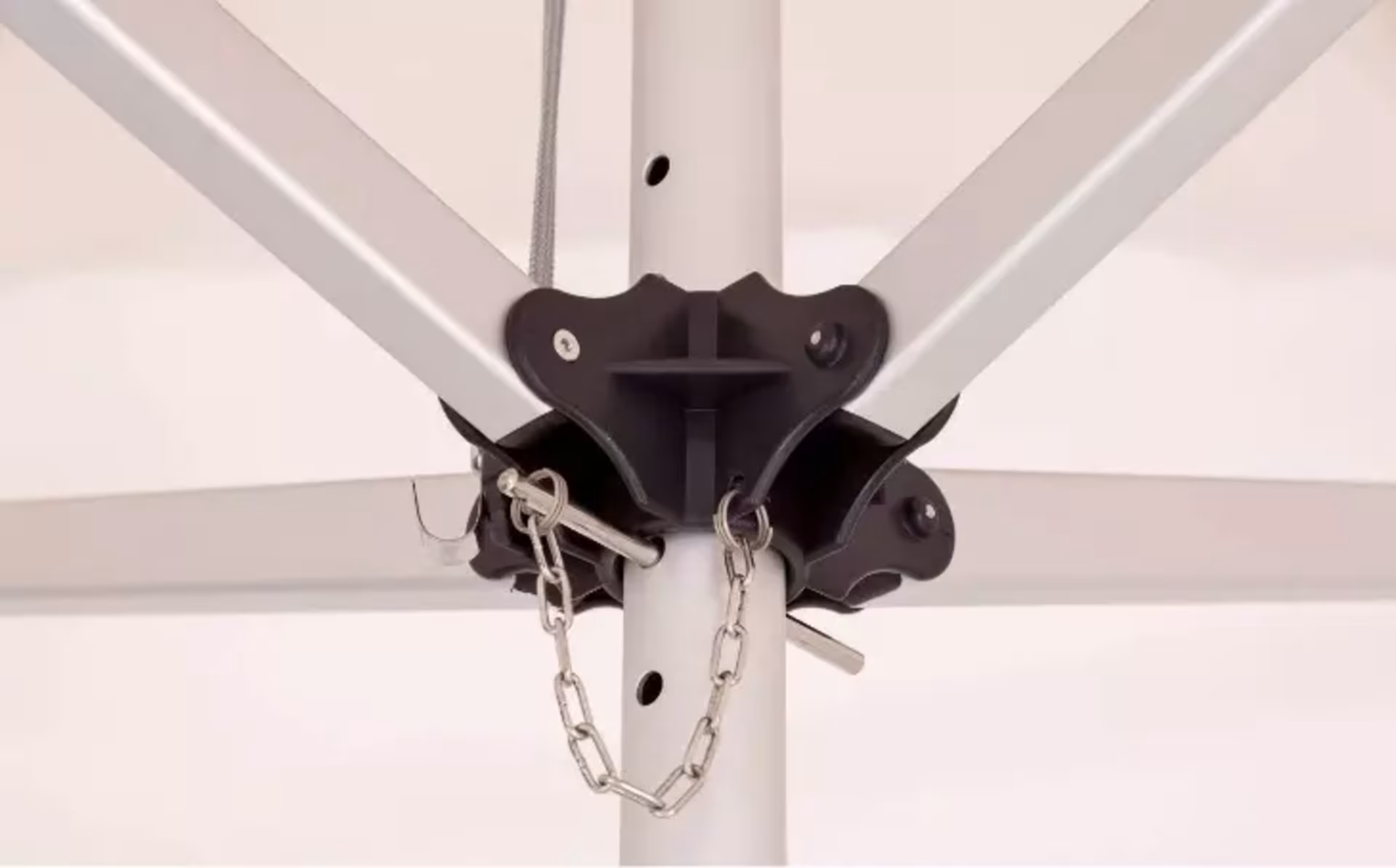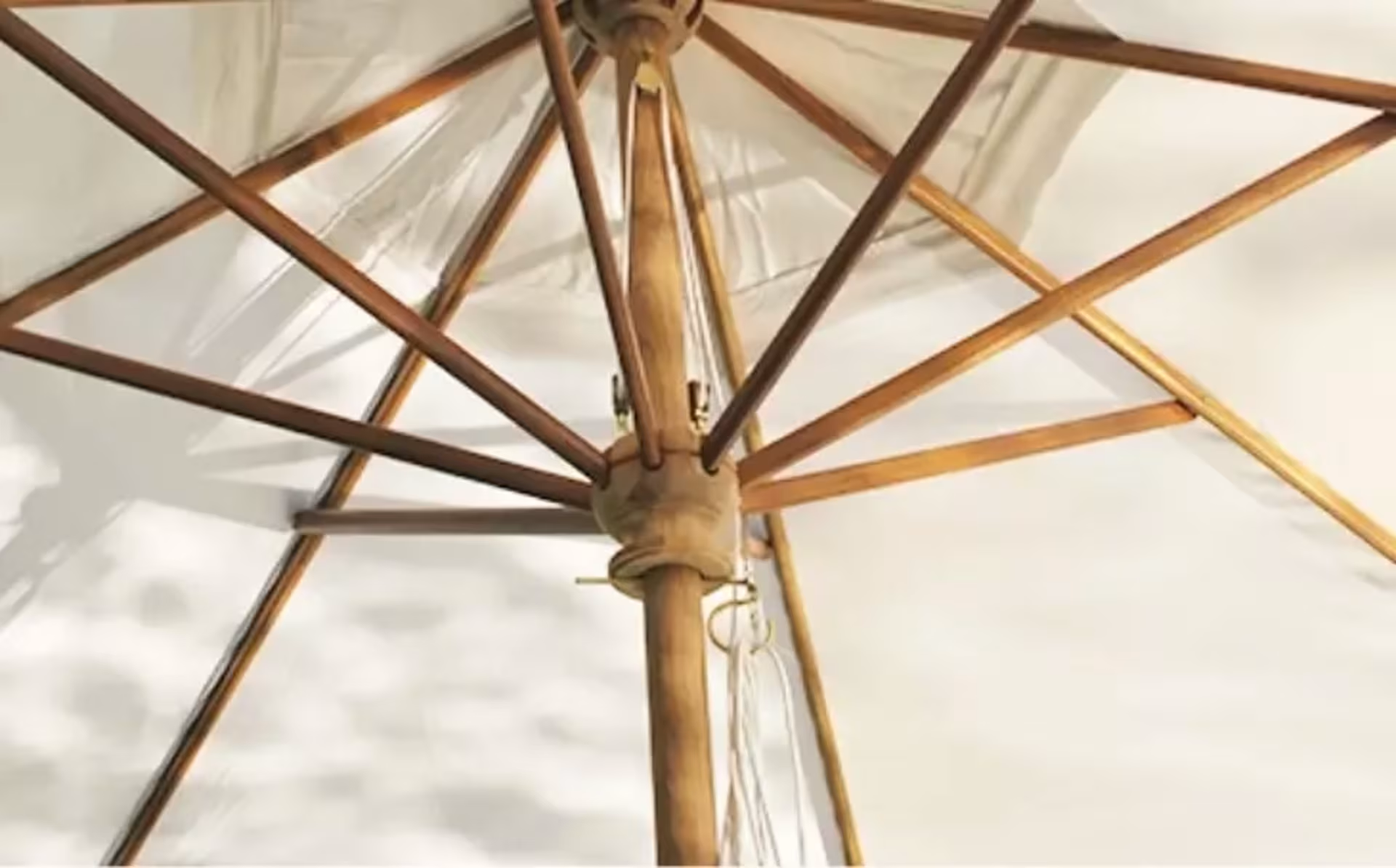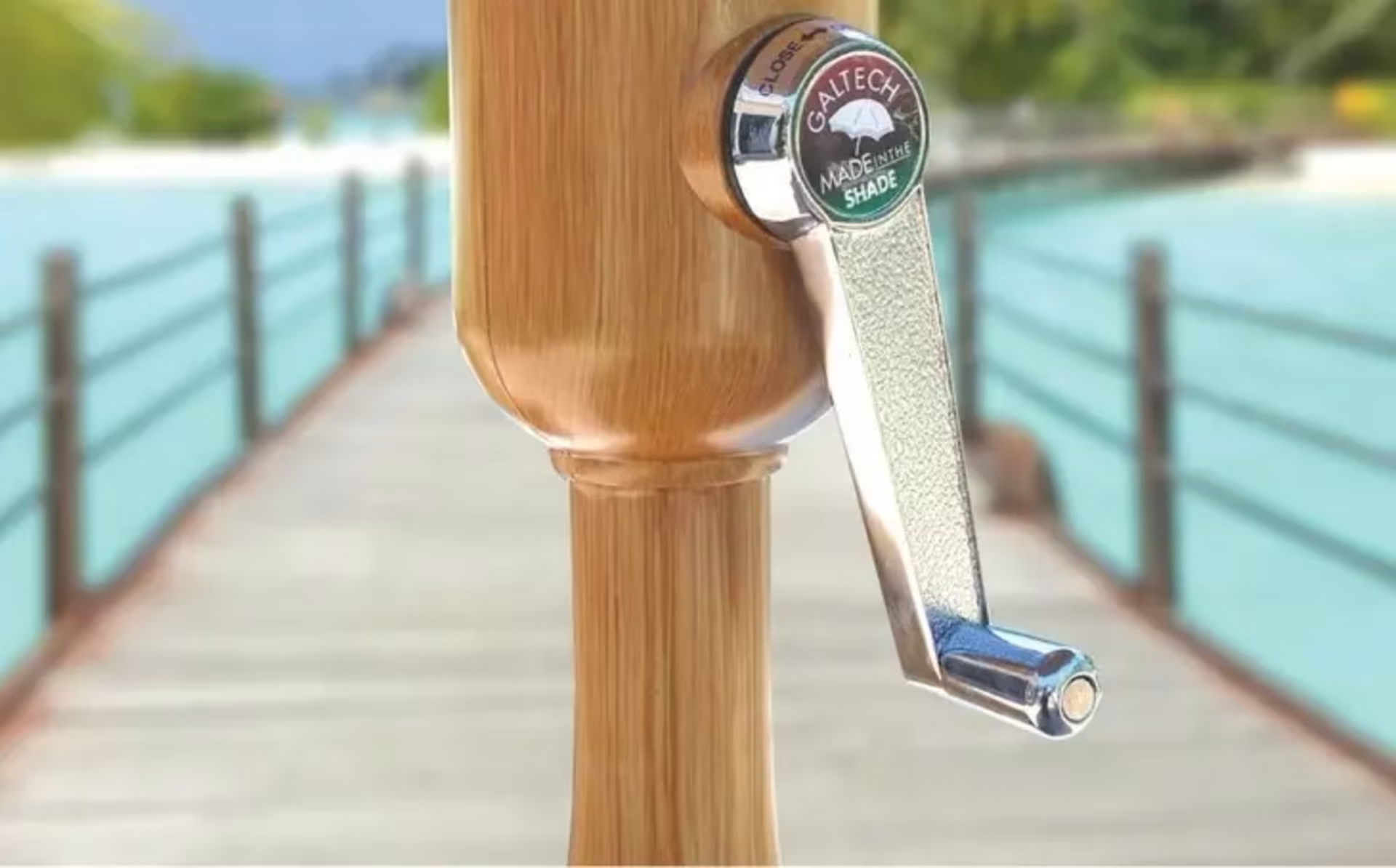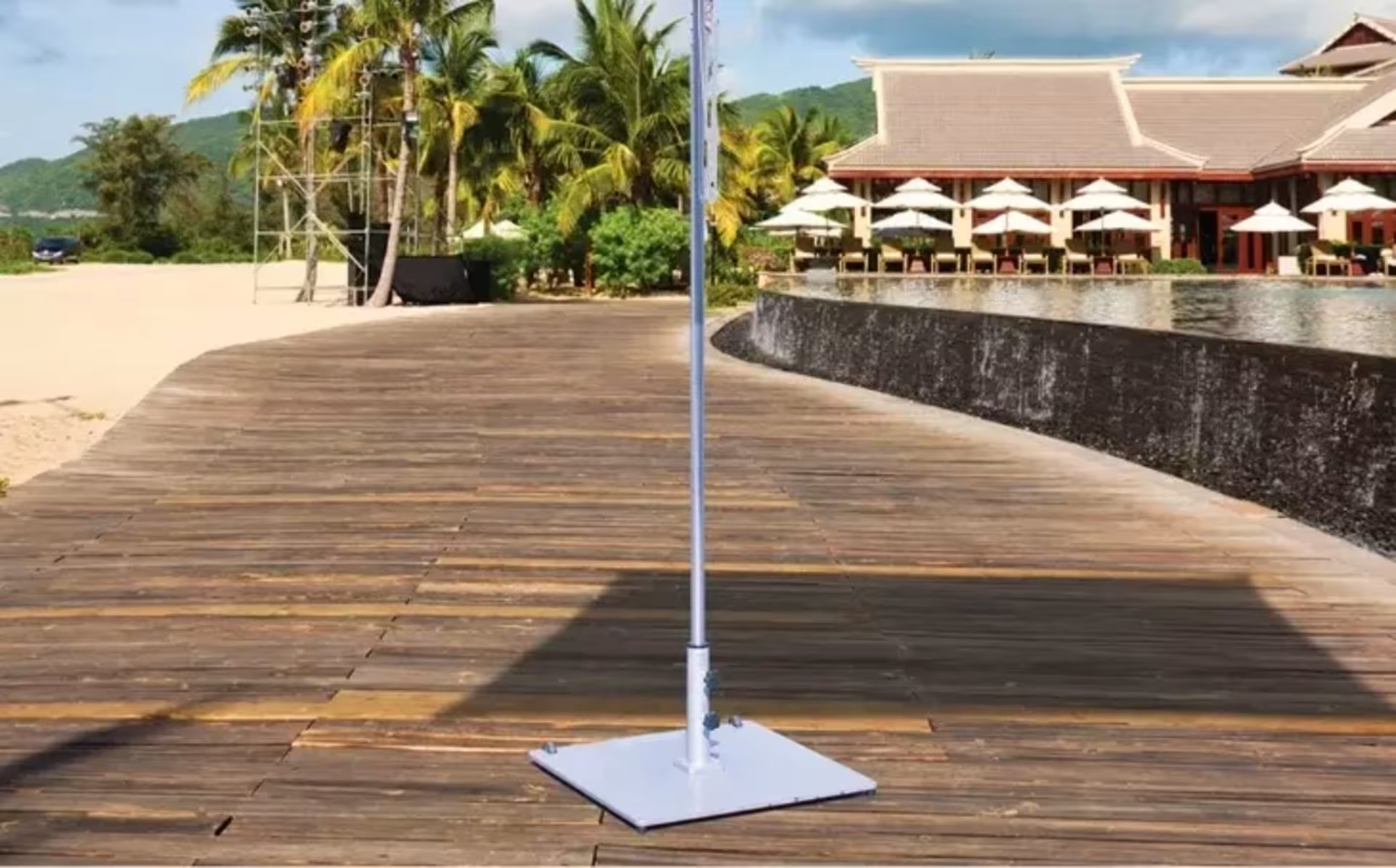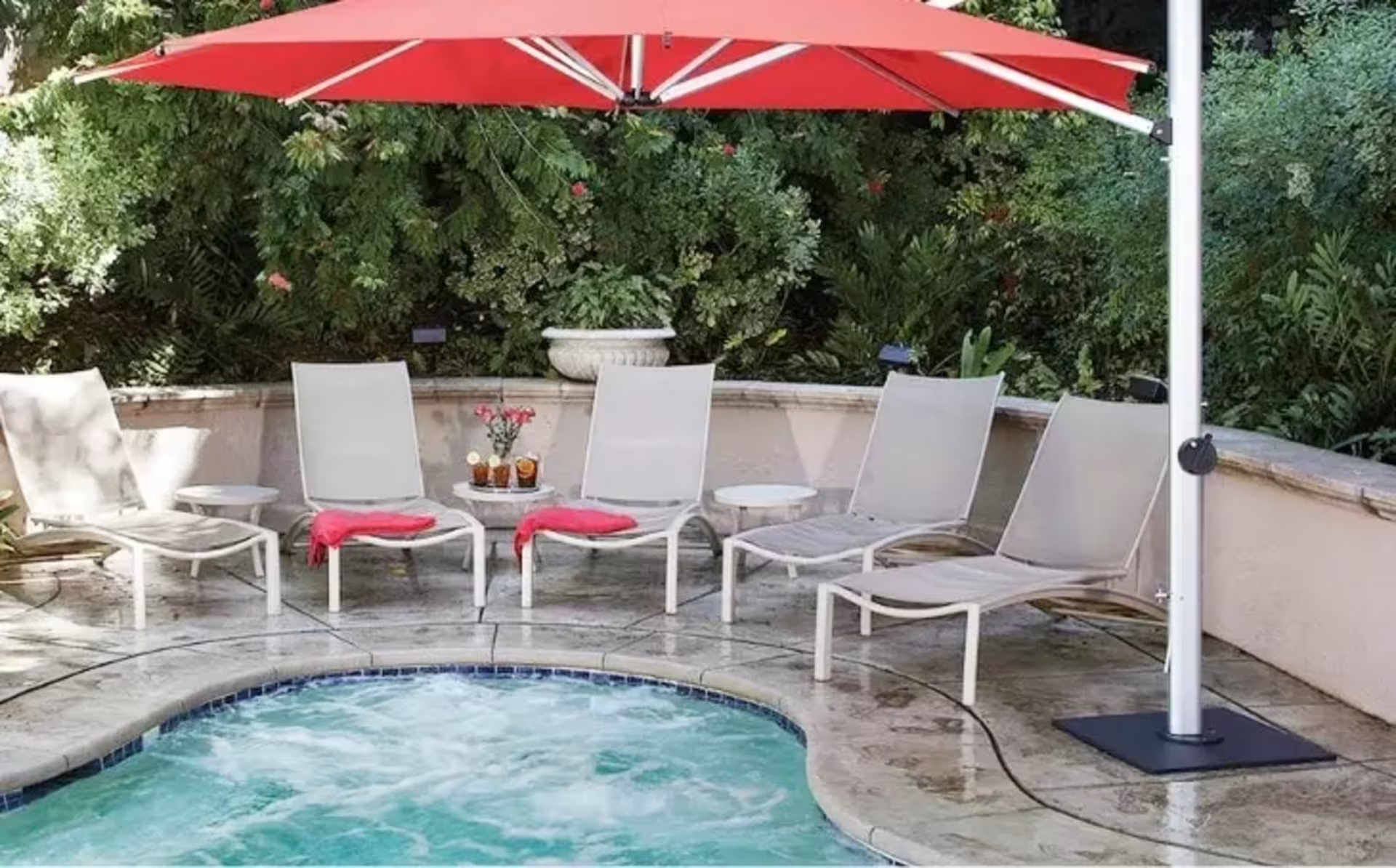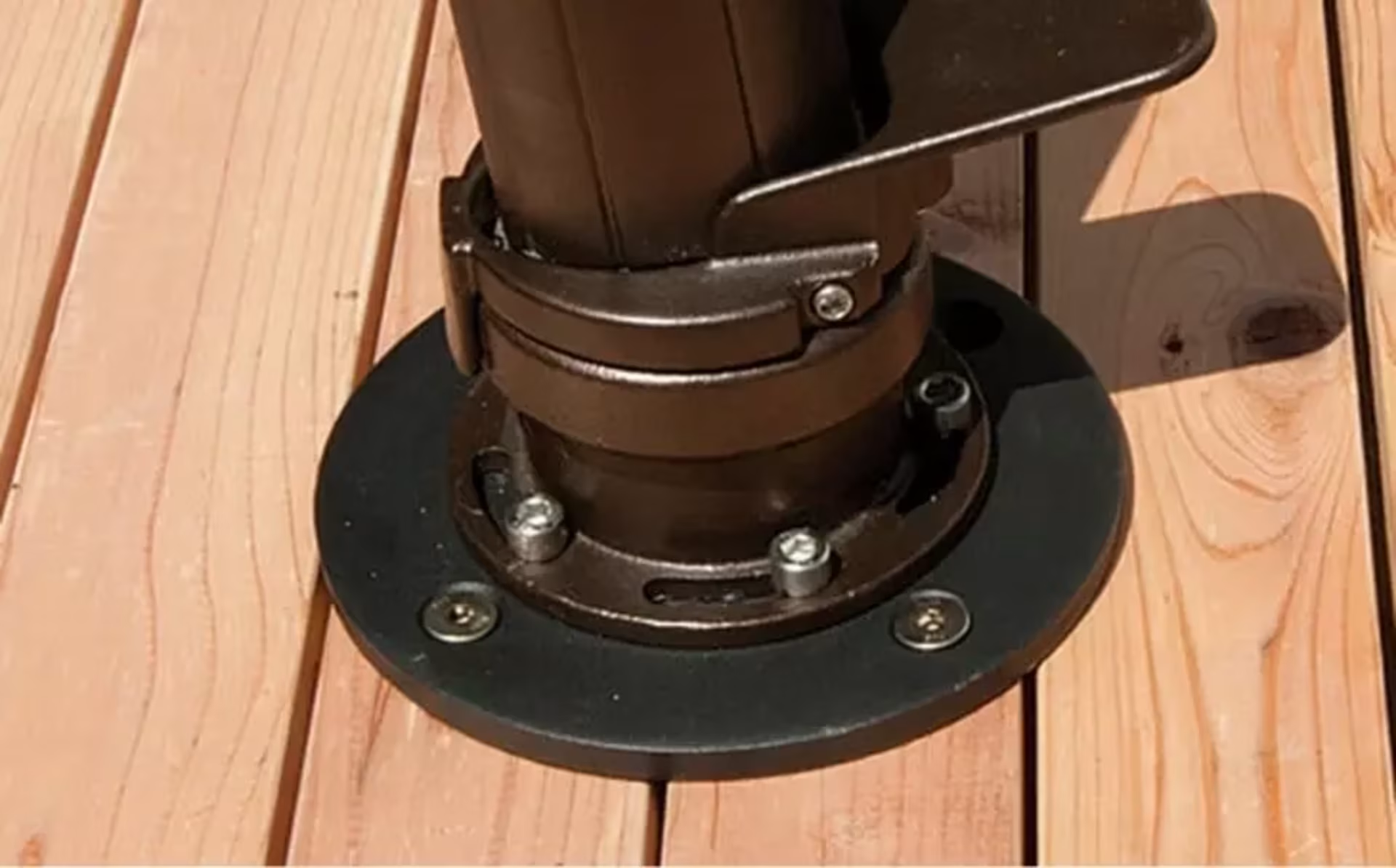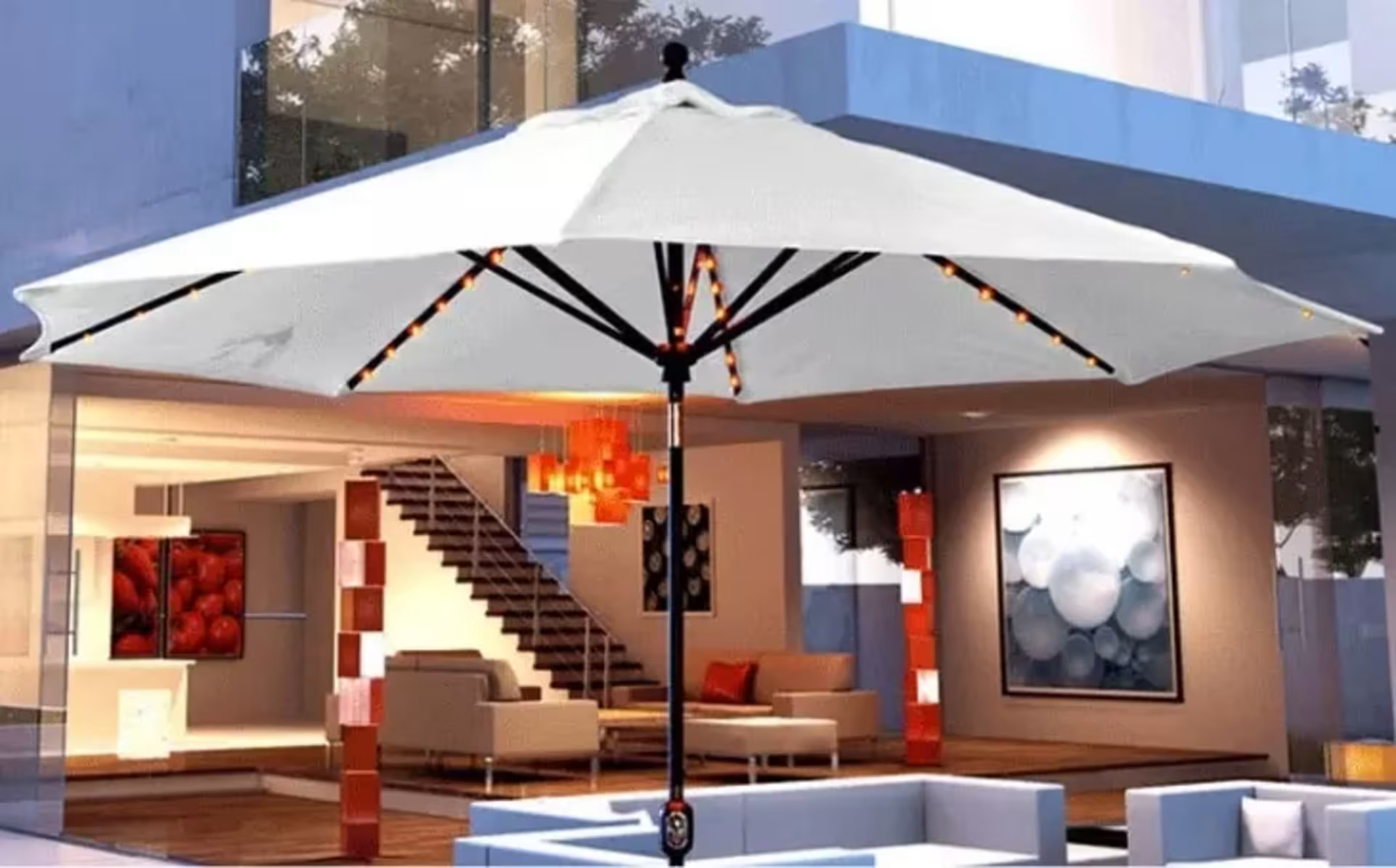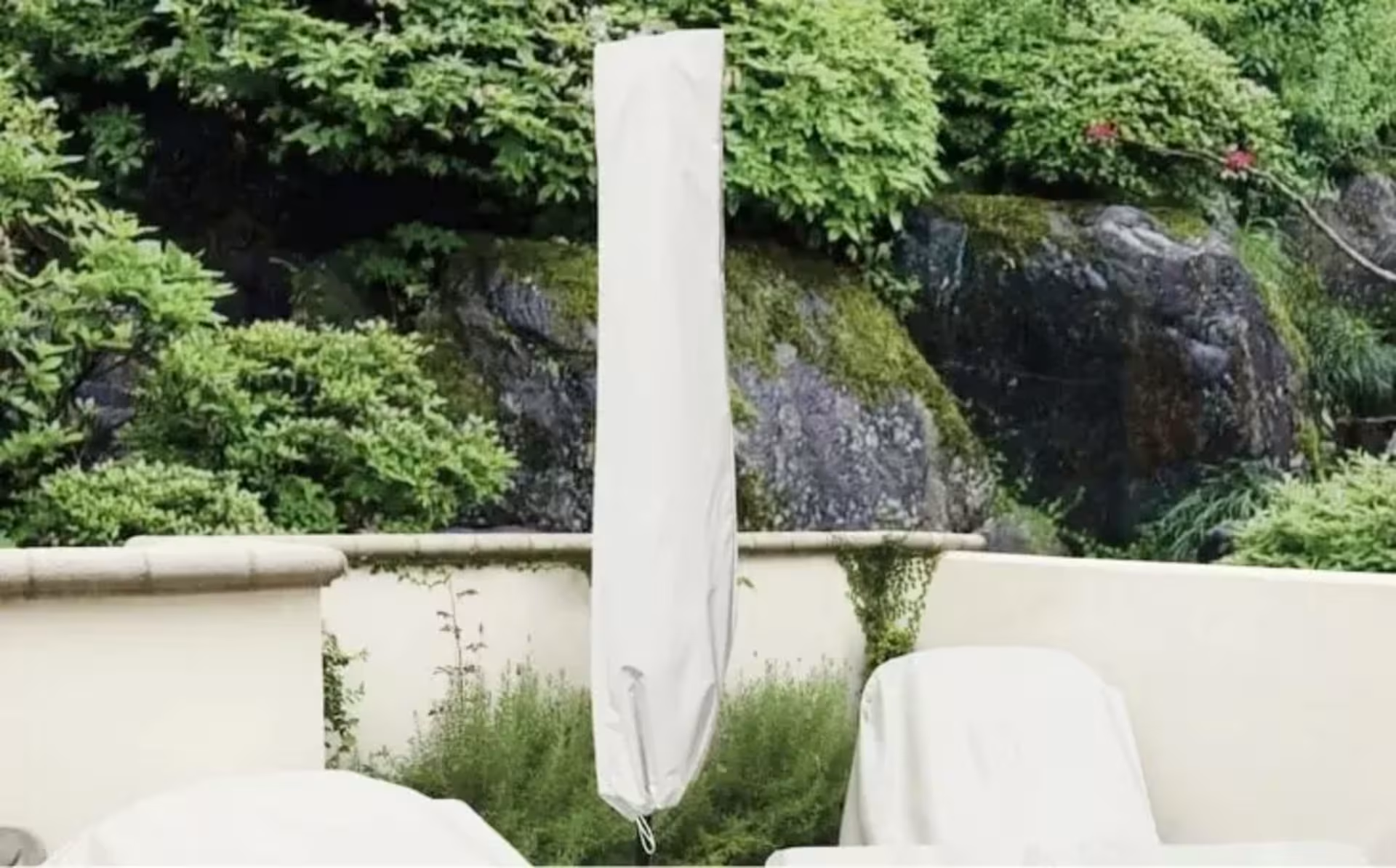
Umbrella Buying Guide: Tips for Buying a Perfect Patio Umbrella
umbrellas 101
The right patio umbrella will extend the life of your outdoor space, keeping things cool and protected from the sun or rain. So what kind of patio umbrella should you choose? There are many factors to consider (size, shape, style, material, functionality) before making a decision. Here, we’re breaking down how to buy an outdoor umbrella, as well as how to measure for a patio umbrella.
THE ANATOMY OF A PATIO UMBRELLA
When learning how to buy an outdoor umbrella, it’s first important to know the makeup of a patio umbrella and why each component is important.

- Canopy
The fabric which provides shade and defines the umbrella shape.
- Finial
A decorative piece at the top of an umbrella that helps secure the canopy to the frame.
- Wind Vent
A layer of fabric on top of the canopy that allows air flow. There are single-wind vents (SWV) and double-wind vents (DWV). SWV are the most common; DWV are typically used for high-wind environments (think rooftops or the beach) or on large umbrellas where the extra vent can help keep the canopy stable. In very hot environments, a DWV allows hot air under the umbrella to escape, keeping temps cool below the canopy.
- Ribs
Slender, pliable pieces that support the fabric canopy, typically made from metal, wood, or flexible fiberglass. Generally, the more ribs, the stronger the umbrella. There are two types of ribs: main ribs, which attach to the top of the umbrella frame and extend to the edges of the canopy, and support ribs, which connect to the underside of the main ribs and help with opening and closing the canopy.
- Hub
A ringed mechanism that works together with the ribs, connecting them at a center point.
- Tilt Mechanism
On some umbrellas, a framework that allows the canopy to be angled, maintaining direct shade throughout the day.
- Pole
The canopy’s main support, the pole determines umbrella height while providing structure and support. Poles consist of either two pieces joined together or (preferred for commercial applications) a single, long pole. Pole diameters range from 1.5 to 2.5 inches.
- Crank Housing
Contains the main cord used to open and close the umbrella.
- Crank Handle
Used to operate the crank housing. Typically made from metal.
- Base Tube
Also known as the base stem, this is a hollow tube, affixed to a weighted umbrella base, that helps secure the umbrella frame to the base.
- Turn Locks/ Locking Knob
Small knob on the base stem that secures the umbrella pole to the base.
- Umbrella Base
A heavy base—typically made of aluminum, steel, concrete, granite, or sand-filled plastic—that prevents the umbrella from moving or falling over. Available with or without wheels, in a variety of shapes.
Outdoor umbrella styles
If you’re wondering how to buy an outdoor umbrella, consider style first. Patio umbrellas are available in three distinct styles: market, cantilever, and tilting umbrellas.
CANTILEVER UMBRELLAS
- Also known as offset umbrellas, these feature an arched or jointed pole positioned off to the side, allowing the canopy to hang freely.
- Many can rotate 360 degrees and tilt side-to-side and/or front-to-back.
- Made from aluminum, bamboo, eucalyptus/teak, or a mix of metal and wood.
- Don’t obstruct views the way market umbrellas might and are ideal for larger dining tables or deep-seating lounge areas.
Decorative detail: Valance
- An additional flap of fabric (approximately 7 inches in height) hangs around the perimeter of the canopy.
- Often seen on large cantilever umbrellas.
- Also blocks direct UV rays when the sun approaches from a sharp angle.
Canopy shape
When deciding on a canopy shape, consider the size of your outdoor space,your ideal amount of shade coverage, and personal style preference.
ROUND / OCTAGONAL / HEXAGONAL
- Great for covering a round dining table or matching chaise loungers.
- These canopies typically have 8 ribs but are also available in 6-rib versions.
HOW TO MEASURE FOR A PATIO UMBRELLA
How big should a patio umbrella be? It depends on your space. Make sure to buy a patio umbrella that provides enough shade to protect against sun and moisture without overwhelming the space. A good rule of thumb: your umbrella’s canopy should extend approximately two feet past the table’s edge or desired coverage area. Here’s a breakdown of how to measure for a patio umbrella:
- 7' - 8' Canopy Diameter
- SHADE AREA DIAMETER
- Up to 36 inches
- FURNITURE PAIRING
- Bistro set, single chair
- SHADE AREA DIAMETER
- 8' - 9' Canopy Diameter
- SHADE AREA DIAMETER
- Up to 48 inches
- FURNITURE PAIRING
- A 4-person patio dining set or single chaise lounge
- SHADE AREA DIAMETER
- 9-10' CANOPY DIAMETER
- SHADE AREA DIAMETER
- Up to 60 inches
- FURNITURE PAIRING
- 4-6 person patio dining set,small outdoor sectional or loveseat
- SHADE AREA DIAMETER
- Up to 72 inches
- FURNITURE PAIRING
- 6-person patio dining set, patio conversation set, or pair of chaise lounge chairs
- SHADE AREA DIAMETER
- 11' - 12' Canopy Diameter
- SHADE AREA DIAMETER
- Up to 84 inches
- FURNITURE PAIRING
- 6-8-person patio dining set or patio conversation set
- SHADE AREA DIAMETER
- 12' - 13' Canopy Diameter
- SHADE AREA DIAMETER
- Up to 96 inches
- FURNITURE PAIRING
- 8-10-person patio dining set,large sectional, or sofas
- SHADE AREA DIAMETER
- 13-14' CANOPY DIAMETER
- SHADE AREA DIAMETER
- Up to 108 inches
- FURNITURE PAIRING
- 10+ patio dining set or oversized outdoor sectional
- SHADE AREA DIAMETER
CANOPY FABRIC
One of the best tips for how to buy a patio umbrella: consider the fabric. The best fabric for your outdoor umbrella depends on a variety of factors, including your budget, space, and climate. The most common canopy fabrics are acrylic, polyester, and olefin.
ACRYLIC
- Highest quality canopy material.
- High-performance and resistant to water, mildew, mold, stains, and fading.
- Provides up to 98 percent UV protection.
Tip: Look for 100-percent solution-dyed acrylic, which means that the color is saturated throughout the fabric rather than printed on top.
POLYESTER
- 100-percent, solution-dyed polyester is the best value fabric for an umbrella canopy.
- Resistant to mildew, mold, stains, and fading, and performs very similar to acrylic.
- Blocks most UV rays.
- Mimics the characteristics of acrylic at a lower price point.
POLE AND FRAME MATERIALS
In addition to the overall aesthetic, pole and frame materials determine the strength and weather-resistance of your umbrella. When looking for materials, ask yourself the following questions: What type of frame is best for your location and climate? What size space is the umbrella shading? What materials are the surrounding furniture? Here’s the lowdown on each material type:
Wooden umbrella frame
- Durable and best paired with wooden furniture.
- Includes teak, eucalyptus, generic hardwood, and bamboo.
- Available in both one-piece and two-piece solid pole constructions.
- Most often features brass, stainless steel, or aluminum accent pieces.
- Typically uses a pulley-lift system to raise and lower the canopy.
- Keep in mind: All wooden umbrellas from AuthenTEAK resist insects and weather damage, but wooden poles will fade after prolonged direct exposure to the sun and moisture.
ALUMINUM UMBRELLA FRAME
- Durable, low-maintenance, and ideal for both commercial and residential spaces.
- Great for all weather conditions and climates.
- In addition to a polished finish, aluminum poles are available in a variety of powder coat finishes such as bronze, silver, black, white, champagne, anthracite/graphite, or driftwood.
- A few specialty frames by Tucci are finished with a wood grain called Aluma-TeakTM, which mimics the look of wood.
- Typically use a pulley-lift, manual push-up lift, or crank-lift (the only version with the ability to tilt) system to raise and lower the canopy.
UMBRELLA OPERATING MECHANISMS
Different umbrella operating mechanisms suit different needs. Some of the most common umbrella mechanisms are below:
Lift types
Lift type is the method used to open and close an umbrella’s canopy.
CRANK
- A rotating handle—located near the center of the pole—is turned until the canopy is fully opened.
- The handle is then turned in reverse to close the umbrella.
- If choosing a crank-operated umbrella, make sure the crank doesn’t interfere with a tabletop, especially if the umbrella is placed in the center of a bar table.
BASES AND MOUNTS
Properly securing your umbrella to withstand winds and weather changes is crucial. Patio umbrellas can be secured by either a traditional base (which can sometimes have wheels) or a mount, which stabilizes an umbrella in a fixed place. Fixed mounts are generally only used with large cantilever umbrellas.
MARKET UMBRELLA BASES
- For freestanding market umbrellas, we recommend a base weighing a minimum of 80 pounds. A good rule of thumb when choosing a base for freestanding market umbrellas is to add 10 pounds per canopy foot.
- For umbrellas at the center of dining tables go for a lighter base, no more than 70 pounds, since the table itself provides additional support.
- Most bases for market umbrellas are made from aluminum, steel, granite, or concrete.
CANTILEVER UMBRELLA BASES
- Cantilever umbrellas require a specific base for each unique make and model.
- Make sure your base and umbrella are from the same brand and that the models are compatible.
- Most umbrella brands make minor model changes from time to time, so the year the umbrella was made could also be a factor in base compatibility.
- Most cantilever bases are made of hard plastic shells filled with heavy sand. Other bases are made from galvanized steel plates that can be stacked on top of one another to achieve the desired weight, or heavy wood or steel blocks that fit into a steel base frame.
WHEELED BASES
- A base with wheels typically starts at 100 pounds.
- These usually have two small rear wheels, but heavier bases have four wheels and locking casters, making them ideal for commercial locations that move furniture often.
CHOOSING AN UMBRELLA MOUNT
- There are three main types of mounts: concrete, deck/wood, and in-ground.
- Generally used with large cantilever umbrellas and require professional installation.
- Mounts are brand and model-specific and are not universal.
Things to consider:
- Pole diameter: Keep in mind that the umbrella pole will need to fit with the base. To ensure a snug, sturdy fit, make sure the diameter of your pole isn’t larger than the diameter of the base stem (or tube). The most common pole and stem size is 1.5 inches, but this can vary and go up to 2.5 inches in diameter. When in doubt, opt for a larger stem.
- Reducer rings: A reducer ring is a round piece of wood or metal (usually brass or stainless steel) that is placed on or in a tabletop’s umbrella hole to create a snug fit for a too-small umbrella pole. Keep in mind that reducer rings are brand- and model-specific.
REPLACEMENT CANOPIES AND FRAMES
Need a replacement? Replacing a canopy or frame is a great way to extend the life of your umbrella, or easily update its color or style. Keep in mind that canopies and frames are often brand-specific, and when ordering a replacement, you’ll want to know your existing umbrella’s brand, model, size, and (for canopies) the shape and number of ribs.
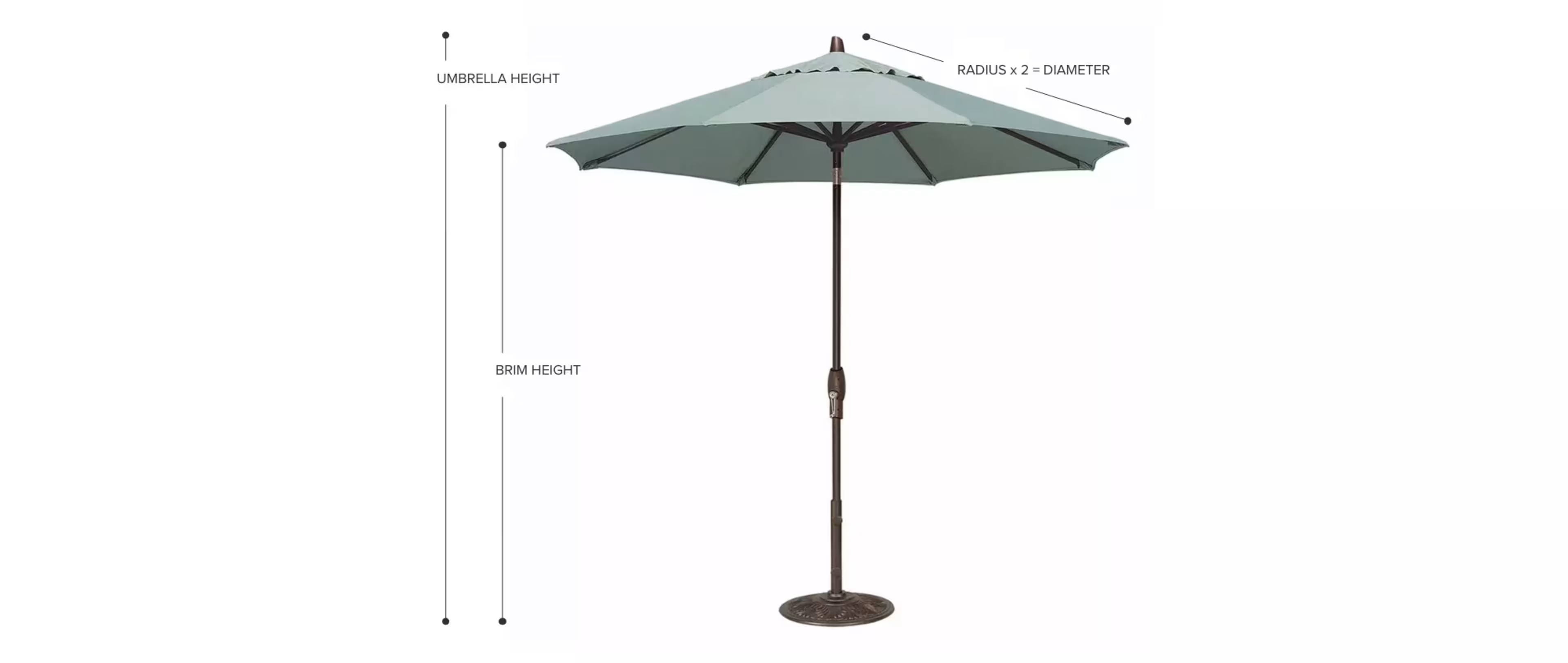
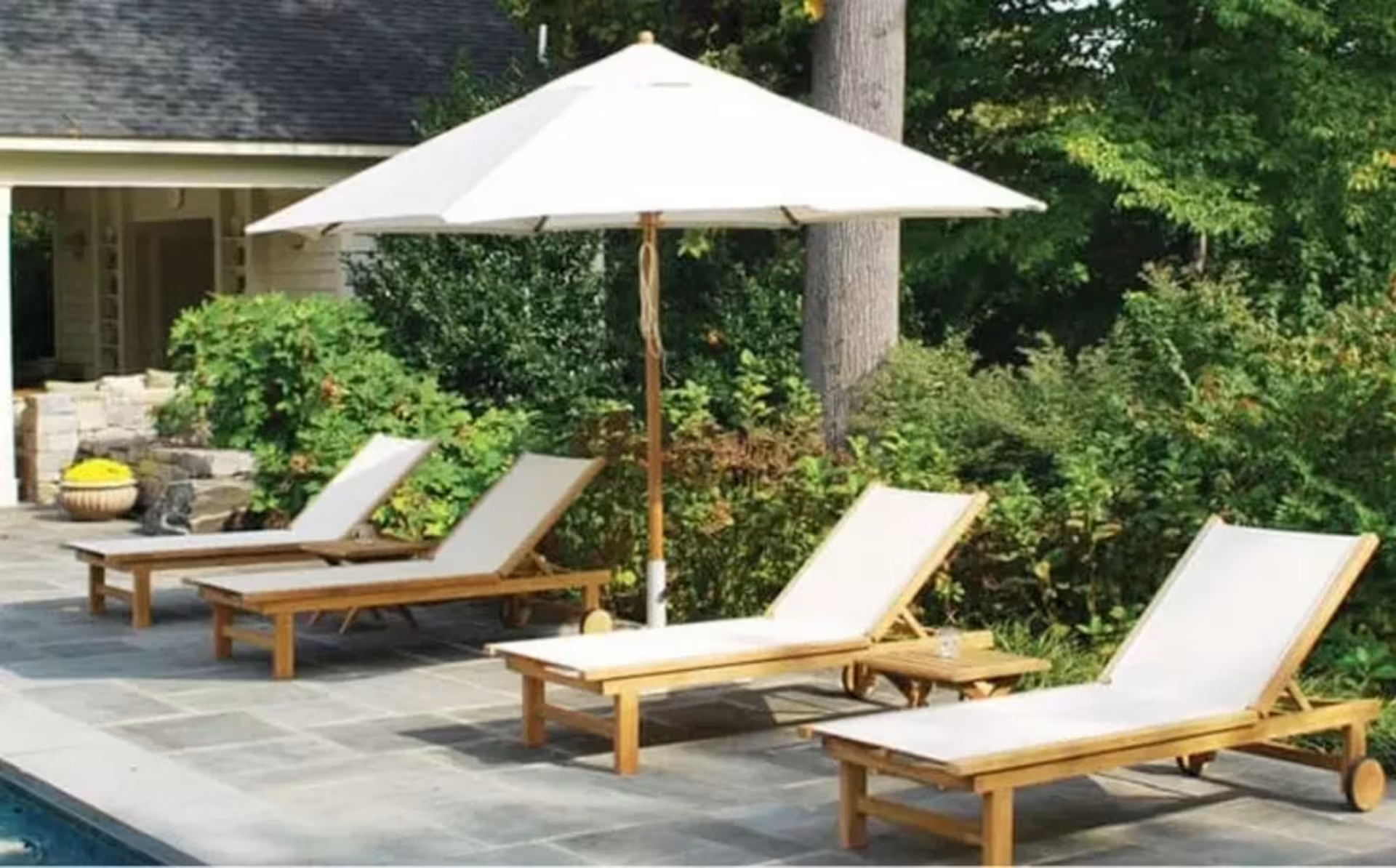
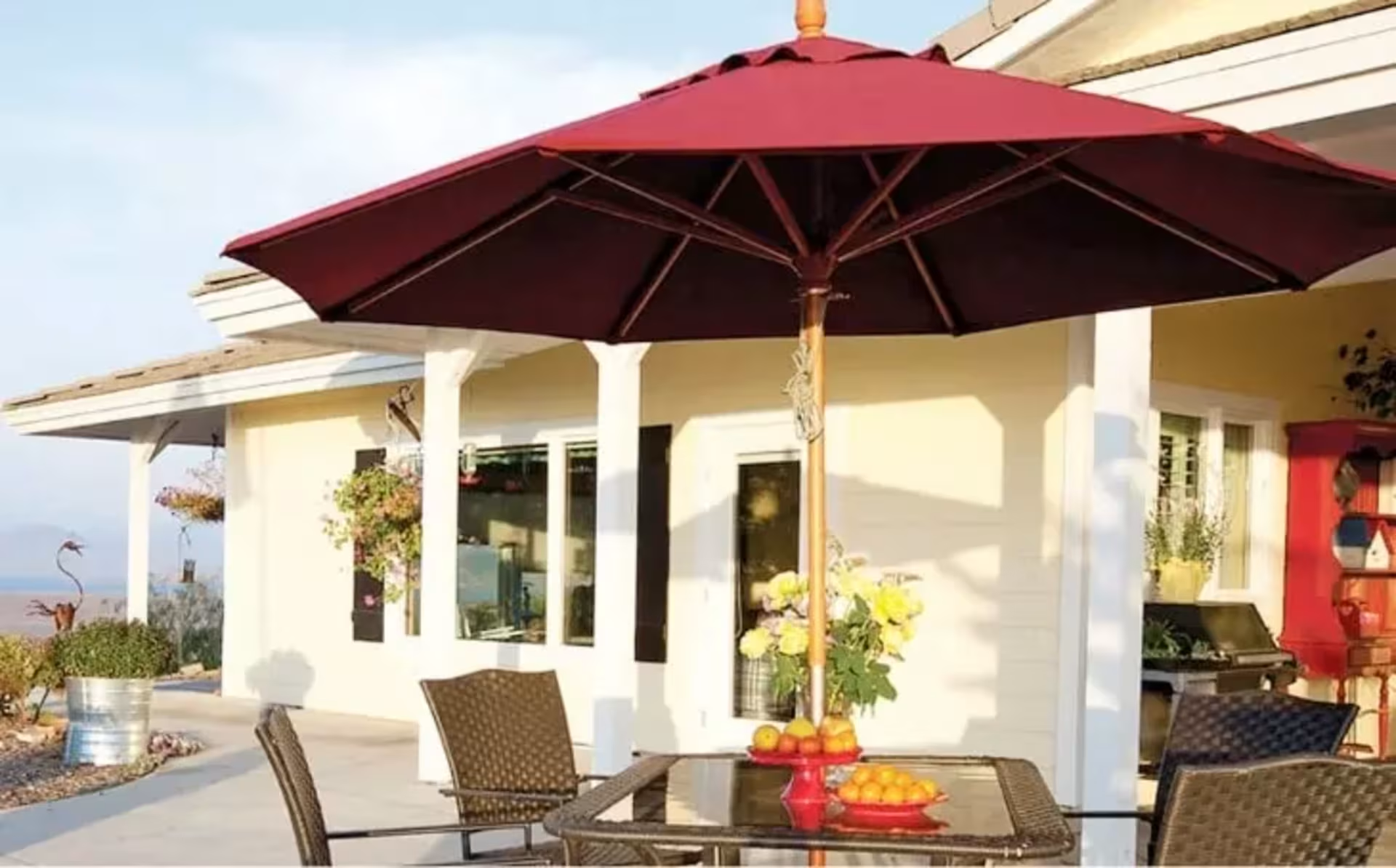
Accessories
Finish the look and extend the life of your outdoor umbrella with accessories and add-ons.
Lights
- Typically made with long-lasting and rechargeable LED lights that emit little heat.
- Can be secured to the ribs inside the canopy.
- Some large cantilever umbrellas, like the Treasure Garden Starlux have lights built directly into the ribs.
Protective covers
- Weather-resistant covers help keep the frame and canopy clean, dry, and mildew-free.
- Most often made from durable, all-weather, and breathable fabrics.
- Make sure to store your umbrella in an upright position in an enclosed, dry area like a basement, garage, or pool house.
Maintenance & Care
Once you’ve mastered how to buy an outdoor umbrella, it’s important to maintain its quality. To extend the life of your umbrella and keep it looking and functioning its best, follow these maintenance and care guidelines.
General tips:
- Make sure to open your umbrella gently; forcing an umbrella open can damage the mechanics and shorten its lifespan.
- If your umbrella doesn’t open easily, check that the pulley rope, ribs, and/or canopy are not crossed underneath.
- Close the canopy when not in use, and do not leave the canopy open unattended.
- Use a protective cover whenever possible, especially in off-seasons and during long periods of inactivity.
- Keep your umbrella dry when not in use.
- While most fabrics are weather-resistant, prolonged moisture exposure can cause mildew and shorten the life of your umbrella.
Cleaning the umbrella frame
- For all frame materials, use a damp cloth to wipe down the ribs, finial, and pole.
- If especially dirty, use a mild soap, but avoid harsh or abrasive cleaners.
Cleaning the umbrella canopy
- Aim to clean the canopy while it’s still on the frame. Using a garden hose with a spray attachment, wet the canopy, adding mild soap or bleach for tough stains, and use a medium-gentle nylon bristle brush to remove any surface dirt and debris. Rinse off when done.
- If this method does not work, remove the canopy from the frame and wash in the washing machine on a gentle cycle. Place the canopy back on the frame to finish drying.
- Canopies should never be pressure washed or put in the dryer.
